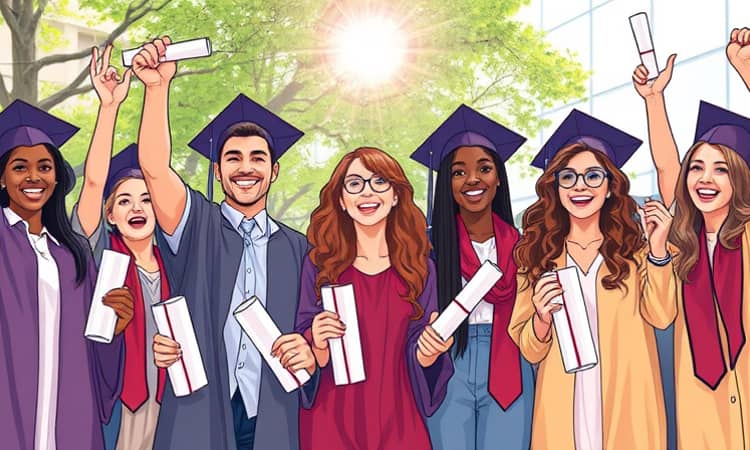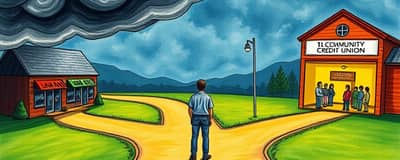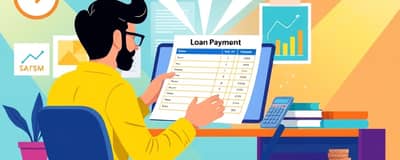For many borrowers, student debt can feel like an unending burden. Yet there is hope: programs designed to release you from your debt exist to restore financial freedom. This guide dives deep into the world of federal, state, and profession-based forgiveness options, offering practical insights and inspiration to chart your path forward.
Whether you’re a teacher, public servant, healthcare worker, or someone on a long-term income-driven plan, understanding your options can unlock relief and ignite purpose. Read on for a comprehensive overview of eligibility, application strategies, and recent policy shifts that may impact your journey.
Understanding Student Loan Forgiveness Basics
At its core, student loan forgiveness releases borrowers from their obligation to repay part or all of federal student loans. Key terms—"forgiveness," "cancellation," and "discharge"—are often used interchangeably, though minor distinctions may apply to specific programs.
Importantly, only federal student loans are eligible for most forgiveness initiatives; private loans generally fall outside these programs. To qualify, you typically must choose the right repayment plan, meet service or employment criteria, and remain current on your payments.
Main Federal Student Loan Forgiveness Programs
The federal government offers several pillars of forgiveness. Each program targets different professions and repayment scenarios, yet all share the common goal of lightening the load for dedicated borrowers.
Public Service Loan Forgiveness (PSLF): After making 120 qualifying monthly payments under an IDR plan, borrowers working full-time for government or nonprofit organizations can have their remaining balance on Direct Loans forgiven tax-free. Consolidation may bring older FFEL or Perkins Loans into eligibility.
Teacher Loan Forgiveness (TLF): Educators at low-income elementary or secondary schools may qualify for up to $17,500 forgiveness after five consecutive years of service. Eligible loans include Direct and Stafford loans disbursed after October 1, 1998.
Income-Driven Repayment (IDR) Forgiveness: Plans like IBR, ICR, PAYE, and SAVE cap monthly payments at a percentage of discretionary income. After 20 to 25 years of qualifying payments, any remaining balance is forgiven. Thanks to the American Rescue Plan, this forgiveness is federally tax-free through December 2025.
Perkins Loan Cancellation: Although no new Perkins Loans are issued, existing borrowers in teaching, nursing, law enforcement, and other fields can cancel 15% to 100% of their loan over five years.
Notable Income-Driven Plans
*Currently paused as of July 2024 pending court rulings. No payments or interest accrue during this suspension.
Other Profession-Based Forgiveness
Beyond federal programs, specialized options exist for dedicated professionals:
- Nurses: PSLF, Perkins cancellation, and the NURSE Corps Loan Repayment Program.
- Health professionals and military roles: State and federal initiatives targeting rural or underserved areas.
- Law enforcement, social workers, and lawyers: Employer-sponsored and state loan repayment programs.
State and Employer Programs
Over 140 state and field-specific forgiveness plans complement federal options. States often focus on healthcare, education, STEM, rural development, and law enforcement, offering grants or repayment assistance to attract talent to underserved regions.
Explore your state’s official higher education agency website to discover localized incentives and eligibility requirements.
Eligibility Requirements
While specifics vary, common criteria include:
- Working in a qualifying public service or low-income school.
- Enrolling in the correct repayment plan (IDR for PSLF, standard plan for TLF).
- Maintaining good standing and staying current on payments.
Remember: only federal student loans are eligible for most forgiveness programs, and consolidating older loans can expand your options.
How to Apply
Begin every application through official channels. Use the PSLF Help Tool to certify employment, submit the TLF form through your loan servicer after five years of teaching, and apply for IDR via your servicer’s online portal.
Keep meticulous records: pay stubs, W-2s, and annual account statements can streamline verification and avoid delays.
Recent Legal and Policy Developments
The SAVE Plan’s pause in July 2024 pending legal resolution means new applicants face temporary hold. Meanwhile, Supreme Court rulings halted large-scale one-time forgiveness proposals, leaving standing programs as the primary paths to relief.
Stay informed: policy shifts can affect eligibility, tax treatment, and application processes.
Common Pitfalls and Warnings
Beware of scams and misinformation. Only use official government websites. Companies charging fees for forgiveness help are often unnecessary and may lead to missed deadlines or lost benefits.
- Scam alerts: Avoid third-party services requesting large upfront fees.
- Rule changes: Program details can shift based on legislation or court rulings.
- Documentation gaps: Missing employment or payment records can derail your application.
Other Tips for Maximizing Benefits
- Seek employer-based repayment assistance if federal programs aren’t a fit.
- Combine state and federal incentives where possible for greater relief.
- Document employment and payments carefully to speed up forgiveness review.
Summary of Major Federal Forgiveness Programs
Student loan forgiveness can transform lives, turning years of financial strain into stepping stones toward meaningful careers and brighter futures. Armed with clarity on eligibility, application steps, and potential pitfalls, you can navigate the process with confidence and hope. Start your journey today, and reclaim the freedom to pursue your passions without the weight of debt holding you back.
References
- https://studentaid.gov/manage-loans/forgiveness-cancellation
- https://studentaid.gov/articles/student-loan-forgiveness/
- https://educationdata.org/student-loan-forgiveness-programs
- https://www.nerdwallet.com/article/loans/student-loans/student-loan-forgiveness
- https://www.investopedia.com/terms/s/student-loan-forgiveness.asp
- https://studentaid.gov/articles/teacher-loan-forgiveness-options/
- https://www.lendingtree.com/student/student-loan-forgiveness/
- https://www.bankrate.com/loans/student-loans/qualify-for-student-loan-forgiveness-programs/














